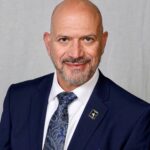It’s clear that the availability of oral appliance therapy (OAT) is a successful form of treatment for patients with obstructive sleep apnea (OSA). The availability of OAT helps dental sleep medicine specialists treat patients suffering from mild to moderate sleep apnea. However, OAT isn’t always the best form of treatment for patients. If OAT doesn’t produce the results dental sleep medicine specialists are looking for in the treatment of sleep apnea, combination therapy might be an improved option for providing relief.
Combination Therapy for Sleep Apnea Treatment Success
Combination therapy is the use of oral appliance therapy in tandem with another form of treatment for sleep apnea. One option I typically use is OAT with ventral only ablation therapy (VOAT). VOAT is a newer approach created by a local physician in Atlanta, GA, Dr. David Dillard. Together these treatment options can further help in improving the treatment of obstructive sleep apnea in qualified patients. It is important to note that if OAT doesn’t work, VOAT might and vice versa. In these cases, Dr. Dillard and I often collaborate to provide dual treatment for our patients. While you might not have the same option for treatment available in your community, there are other combination therapy options available.
 Ventral Only Ablation Therapy (VOAT) and OAT
Ventral Only Ablation Therapy (VOAT) and OAT
VOAT surgery is a new approach to radiofrequency ablation of the tongue that has improved success rates over similar treatments. Previous radiofrequency ablation (RFA) procedures approached the tongue from a dorsal (top surface) aspect of the tongue. However, the VOAT procedure approach is from the bottom surface for a less painful and better outcome. With this procedure, patients have an 80% chance of improvement.
As a result, many patients don’t require a CPAP machine to improve their sleeping patterns. The VOAT procedure is quick and requires minimal sedation and treatment sometimes takes only 30 seconds.
Through the availability of combination therapy, OAT and VOAT give patients the benefits of both individual treatments. Many patients are CPAP non-compliant, and the combination of VOAT and OAT helps patients experience improved results.
Utilizing CPAP and OAT
Another combination therapy approach is through continuous positive airway pressure (CPAP) therapy. CPAP therapy is highly effective in treating obstructive sleep apnea, but it is limited by poor adherence to therapy. The combination of a nasal CPAP and OAT can provide another option for CPAP-intolerant patients with incomplete response to OAT.
In a 2011 study, ten patients with residual apnea/hypopnea events on mandibular advancement devices (MADs) who were intolerant to CPAP therapy were examined. The combination of MAD and nasal CPAP was well tolerated by all participants. Compared to utilizing CPAP therapy alone, the optimal pressure required to eliminate all obstructive events on the combination therapy was reduced from 9.4 to 7.3 cm. The combination therapy was also effective in reducing daytime sleepiness.1
 Drug-Induced Sleep Endoscopy (DISE)
Drug-Induced Sleep Endoscopy (DISE)
The mandatory diagnostic workup for OSA is through polysomnography (PSG). An up and coming adjunct diagnostic procedure is drug-induced sleep endoscopy (DISE), which is a dynamic, safe, easy-to-perform technique that visualizes the anatomic sites of snoring or apneas. DISE looks at the airway with a scope to see at which level obstructions are taking place. DISE guides the making of a tailor-made treatment plan in individualized cases.
A study of 100 patients who were eligible for sleep surgery or mandibular repositioning appliance (MRA) underwent PSG and DISE. As a result of this study, multilevel collapse, complete collapse, and a tongue-based collapse were statistically associated with higher apnea-hypopnea index values. The result of this study helps healthcare professionals to understand the pathogenesis of OSA and the associations between PSG outcomes and DISE results while assisting in the creation of patient-specific treatment options.2
Another study further displayed DISE’s influence on the location of treatment. As a result, the change in success rates of non-CPAP therapy in OSA and snoring might be possible.3
DISE also plays a role in determining if implanted upper airway stimulation (UAS), which consists of a respiration sensor, a programmable implanted pulse generator, and stimulating electrodes, is an effective tool in the treatment of OSA. A study of 21 OSA patients who underwent DISE before implantation of a UAS system revealed a significantly better outcome for these patients. The absence of palatal collapsibility during DISE may help to predict therapeutic success with UAS therapy.4
 Body Position and OSA
Body Position and OSA
Patients can experience improvement through their body position. A study of 30 male patients examined time spent on their side versus time on their back while sleeping. For 24 of the subjects, the apnea index was found to be twice as high during time spent sleeping on their backs than when they slept in the side position. This difference is reliable and inversely related to obesity. Five patients meeting diagnostic criteria for obstructive sleep apnea on an all-night basis fell within normal limits while in the side position, which suggests sleep position adjustment may be a viable treatment for patients who are not obese.5
Weight Loss and OSA
Therapeutic effects of weight loss was evaluated in 15 patients suffering from moderately severe OSA. As these patients decreased their body weight, the frequency of apnea fell significantly in non-rapid-eye-movement sleep. Weight loss also led to a decline in the mean oxyhemoglobin saturation during the remaining episodes of sleep apnea.
Patients also experienced improved sleep patterns with a reduction in stage I sleep and a rise in stage II sleep. Of the nine patients with the most marked fall in apnea frequency, daytime hypersomnolence decreased. In patients who didn’t lose weight, there were no significant changes in sleep patterns. The results from this study showed that moderate weight loss alone could alleviate sleep apnea, improve sleep architecture, and decrease daytime hypersomnolence.6
 Combination therapy can involve CPAP, OAT, a change in sleep position, DISE as a guide to determining treatment, or even weight loss. It can also be any other upper airway surgical procedure in combination with OAT. The key is to identify the level at which treatment is failing. Once we visualize where the failure is, with or without OAT, a better-targeted approach can be created to improve treatment outcomes.
Combination therapy can involve CPAP, OAT, a change in sleep position, DISE as a guide to determining treatment, or even weight loss. It can also be any other upper airway surgical procedure in combination with OAT. The key is to identify the level at which treatment is failing. Once we visualize where the failure is, with or without OAT, a better-targeted approach can be created to improve treatment outcomes.
The newer procedures listed above are not the gold standard of care for sleep apnea, but they are upcoming treatments that may be promising. Remaining open and committed to finding the right treatment for patients, including combination therapy, has provided common ground to work with physicians and co-referrals. Communicating with physicians is the key to a successful dental sleep medicine practice, and combination therapy allows dentists to keep that line of communication open.





